
The Japanese diet is a low-carb and low-calorie diet developed by Japanese nutritionists, whose protein menu allows you to lose about 10 kilograms in 2 weeks.
Being overweight today many people call the payment for an extremely fast-paced lifestyle. We are in a hurry to live, in a hurry to work, always to eat. . . Moreover, we often eat running and with what God will send, as they say. And in the 21st century, God sends us hamburgers, hot dogs, more and more cheeseseburgers and soda. . . “What to do? Don’t waste a precious minute for lunch in a restaurant or what? - to cook for yourself in the kitchen when the business is "on fire"? ! Here, they say, the whole prosperous world lives like this and nothing. "The apology uses a lot of people with an active lifestyle. And when your favorite jeans don't fit, when you have to buy a longer belt, when you're between a seductive skirt that fits snugly around thewaist and ugly shapeless style with an elastic band, we choose the latter, then, of course, it 's time to create a new excuse. Well, really - all this is not improper nutrition, of course, but simply. thick bone. Yes, yes, and there's nothing to do about it, thick bone - it's so big, very timid. And as soon as it starts - everything, it's impossible to stop it.
Now let’s turn our attention to Japan, a country with huge opportunities, the highest level of technological development and an incredible pace of life. It would seem if one does not have time to pause to get the right meals just like the Japanese. But, surprisingly, you rarely meet "thick-boned" among Japanese inhabitants. . . So what's the secret then?
The fact of the matter is that Japanese snacks are low-calorie food, rich in protein, almost devoid of fat and "bad" carbohydrates. And the main principle of the Eastern food tradition is moderation. That is why Japanese cuisine is called one of the healthiest foods for the body.
Taking into account the significant characteristics of the Eastern nutritional tradition, a balanced and highly effective diet known as Japanese was created. In fact, there is no food from traditional Japanese cuisine on the menu of this diet. But there is a greater incompatibility of proteins, fats and carbohydrates, in just what is needed for the body to get everything it needs without encouraging the “fattening” of the bone. There are several diet options, but the most popular is the 14-day Japanese salt-free diet. Two weeks of proper “Japanese” nutrition will help “thick bones” lose more than 10 kilograms of weight and keep the result smooth for several years.
It is the heart of the Japanese diet
Those who decide to go “Japanese” will have to be patient and move away from their normal way of eating for two weeks. For many, diet may seem like a daunting challenge, but the effect will not be long in coming. But the amazing results will remain for several years. Only a two-week “Japanese woman” regime - and ten kilograms (even more times - it all depends on the initial weight), as it were.
So what's the main secret? Why is the Japanese diet for a week better than other nutritional systems for weight loss? What is a great way to help you lose weight even for those who have tried many other diets on themselves to no avail?
It consists of carefully selected products for the diet menu - they are put together in a way that speeds up the metabolic process as much as possible. Therefore, it is equally important to strictly adhere to all the instructions, to eat only the things mentioned, not to "enhance" its other products, even if at first glance they seem completely interchangeable. It is also not recommended to swap menu days.
For many women, when choosing their diet, the level of their “hunger” is important, since not everyone is able to fight the power of the samurai will against their own desires, especiallyold instinct of all living beings - hunger. That's why the two-week diet from Japan is not a "hungry" diet. Adhering to it, you will not have to chew one cabbage for weeks and drink low-fat kefir, cursing yourself, your overweight and those who came on a diet. The Japanese woman menu is for interesting and tasty recipes. This diet will be especially appealing to those who normally drink only coffee. And meat and fish lovers will not find anything difficult in it. This is the best diet for them.The essence of the Japanese diet is easy to explain in one word - slowing down and efficiency.
"Japanese" is a low-calorie protein fiber diet. Carbohydrates, as low as possible in the daily diet, force you to lose weight faster - and in need of energy, the body begins to process its own fat reserves into vowels. But it’s important to remember something else: a Japanese woman’s diet will not allow the body to saturate with the full spectrum of vitamins and minerals. Therefore, it is completely forbidden to go on a diet longer than prescribed (no more than 14 days), so as not to complete a course of weight loss in a hospital bed.
And if you want to feel like a real Japanese, you can try Japanese sticks instead of traditional European forks and spoons. Not only will they express the spirit of the Rising Country, but they will also teach how to eat slowly and in small pieces. By the way, many diets supporters know this trick. A leisure meal can soothe the body and make you feel full even after very small meals. This should, in fact, be taught by the Japanese dietitian for weight loss.
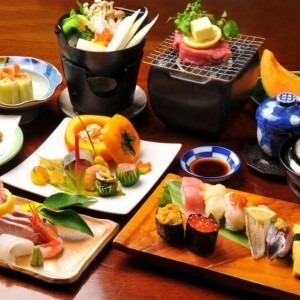
Types of Japanese Diet
Due to the huge popularity of the Japanese diet among women around the world a number of options are emerging for this system for weight loss. Diet choices are especially known:
- Japanese salt-free diet for 7 days;
- for 13 days (the most commonly used diet);
- for 14 days (different from the previous 13-day diet, about one day);
- Japanese woman with green tea; Naz Moriyama Diet.
The menu of the Japanese diet for weight loss consists of foods that are low in calories, carbohydrates and without any salt, spices, sugar and sweet confectionery, as well as any alcohol, therefore consideredthe strict diet. This contributes to the rapid breakdown of fat into body fat, as the body becomes stressed and forced to burn its own fats and calories.
Diet menu for 7 days
The 7-day Japanese diet is a mild version of the traditional Japanese diet, but at the same time, the 7-day diet is the basis of the whole diet.
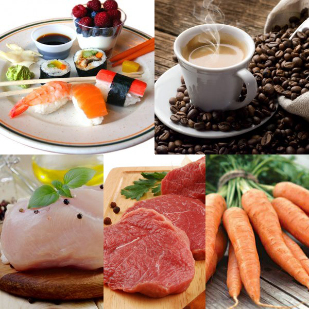
Predicted results: 3-5 kilograms left in the past.
Disadvantage: the longevity of the fruit is not guaranteed, since the body has not yet had time to adapt to the new metabolic system.
Day 1
Caloric content in the daily diet: 700 kcal.
Required Products:
- black coffee
- ; chicken eggs
- ; fresh cabbage
- (Peking cabbage / white cabbage); tomato juice
- (ideally squeezed);
- low fat fish.
Breakfast:
- Black coffee
- - it's best to prioritize espresso, but it's best to forget about sugar.
Lunch:
- boiled chicken eggs
- (2 pieces are possible); Salad
- "Japanese" - fresh cabbage and a little vegetable oil, no need to add salt;
- glass of tomato juice.
Dinner:
- Steam fish
- - hake, cod, pollock are suitable (some not more than 200 grams); Japanese salad
- .
Day 2
Caloric content in the daily diet: 1000 kcal.
Required Products:
- coffee
- ; rusks
- ; fish
- (fatty types); cabbage
- ; vegetable oil
- ; beef
- ;
- kefir.
Breakfast:
- coffee
- ; rusks
- - take a small one, weighing about 30 grams.
Lunch:
- Fish
- , fried or stewed - for variety and additional consumption of fatty acids, it is best to give priority to catfish, salmon, black halibut. In all, no more than 150 grams; Salad
- "Japanese".
Dinner:
- beef - boil about 200 grams. Eating without salt;
- kefir - you can skim, but no more than 200 grams glass.
Day 3
Caloric content of the daily diet: 1000 kcal.
Required Products:
- coffee
- ; courier / parsnip
- ; apple
- ; chicken eggs
- ; veal
- ; cabbage
- ; Vegetable oil
- .
Breakfast:
- Black coffee
- - don't forget about the sugar moratorium.
Lunch:
- zucchini (large enough) or parsnip root (also large) - brown in vegetable oil (do not use flour or batter for frying, salt is also prohibited);
- apple - don't get me wrong, it's best to limit yourself to one result.
Dinner:
- boiled chicken eggs
- - 2 pieces; cooked veal
- - boil a 200 gram piece prepared in a salt-free manner; Salad
- "Japanese".
Day 4
Caloric content in the daily diet: 1000 kcal.
Required Products:
- coffee
- ; carrot
- ; hard cheese
- ; chicken egg
- ; apples
- .
Breakfast:
- non-sugar black coffee.
Lunch:
- carrots
- - boil, it is allowed to take 3 more roots;
- some cheese - choose hard varieties, limit yourself to 20 grams; raw chicken egg
- - one is enough.
All 4 day lunch ingredients, if desired, can be combined into one dish - salad.
Dinner:
- Apples
- - some results allowed.
At this point, the feeling of hunger will not be as strong as it has ever been. Whole comes after small portions of food.
Day 5
Caloric content in the daily diet: 800-1000 kcal.
Required Products:
- carrots
- ; lemon juice
- ; marine fish
- ; Juice
- ; Results
- .
Breakfast:
- carrots
- and lemon juice - grate the vegetables and season with juice. You cannot add sugar. Also excluded from this day from breakfast and coffee.
Lunch:
- fried fish
- - take about 350-400 grams, variety - none of the sea; tomato juice
- - for diet, it would be more correct to use fresh, prepared yourself. Volume - no more than 200 grams.
Dinner:
- Fruit
- - but you should not eat grapes of any kind or bananas, especially before bedtime. They will traverse all the results achieved so far.
Day 6
Caloric content of the daily diet: 900-1100 kcal.
Required Products:
- coffee
- ; chicken fillet
- ; raw cabbage
- ; carrots
- ; vegetable oil
- ; chicken eggs
- .
Breakfast:
- non-sugar black coffee.
Lunch:
- chicken fillet
- - limit the portion to 500 g, take skinless meat. Boil in water without adding salt;
- salad - on this day, a traditional “Japanese” salad can be enhanced by the addition of grated raw carrots.
Dinner:
- chicken eggs
- - boil 2 pieces; Carrots
- (you can take a big one) - grate a vegetable grate, season the salad with a small amount of vegetable oil (maybe olive oil).
Day 7
Caloric content in the daily diet: 700-800 kcal.
Required Products:
- tae
- ; results
- ;
- beef; eggs
- ; cabbage
- ; Vegetable oil
- .
Breakfast:
- Tea
- - it is recommended to choose good varieties of green, rich in beneficial antioxidants.
Lunch:
- beef - boil about 200 grams. Do not use salt or other spices during cooking; Fruit
- - on the last day of the diet, you can treat yourself to a lunch dessert. But do not forget about the ban on the use of bananas and grapes.
Dinner:
On this day for dinner, as a reward for perseverance, you can choose any dinner option from the previous days. For example, choose a version of a salad of beef, eggs and cabbage seasoned with olive oil.
This will eliminate the diet for some. For those who have opted for the longer versions of the Japanese woman, the 7th day is just to change the equator of the work on oneself.
For those who are not accustomed to eating by counting calories, "Japanese" at first seems like a very tough option for losing weight. But the discomfort will only be noticeable for the first few days - then the body adapts to small portions of food, it starts eating faster. After 5 days of a new diet in the body, the first stage of restructuring begins with an acceleration of metabolism - the main goal of any diet is to lose too much weight, remove too much fluids, edema disappears. To achieve the best result in a diet parallel, you can do an anti-cellulite massage course.
Japanese diet for 13 days
The most popular is the 13 Day Japanese Diet. This version is considered to be a complete weight loss course.
Predicted results. If you are ashamed to stick to all the recipes, at the end of the day 13 days, you will be missing about 10 kilograms and about 30 cm in volume (sometimes more).
How is it different from the 7 day option? In fact, this is a continuation of the light version of "Japanese woman". That is, you will have to go through 7 days of “Japanese” life, and on the 8th day start again, repeating days from the first to the sixth.
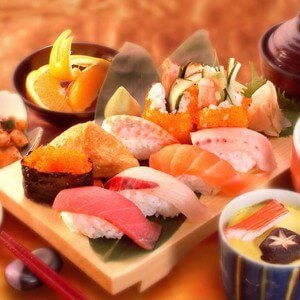
Japanese diet for 14 days
The 14-day version of the Japanese diet was also the basis of the 7-day menu, although there were some nuances. The main difference from the previous two options is that in the first week you have to strictly adhere to the 7-day menu, and the second week to eat according to the same program, but in the opposite order. This means that the eighth day diet corresponds to the diet of the last day of the 7th day, on the ninth day - the 6th day menu, on the tenth day - the 5th day menu. . . And according to this principle, continue until the end of the second week. As a result, the last 14 days of the diet ended with the first day of the 7-day version of the "Japanese woman".
Starting from the 8th day of dietary nutrition, the detoxification process is activated in the body, and due to the principle of salt-free nutrition, excess fluid is removed at the intercellular level, getting rid of edema completely. It is important that in the second week of the diet the body is used to the new metabolic rate. Thanks to this, even after going on a normal diet (as usual - this does not mean that you eat again in basins for the next sleep, but you also do not have to live in “hungry” mode)the body will gain weight, on the contrary - fat will be burned as fast as during the diet. This amazing effect will last about 2 years. But provided the diet was properly maintained. Those who already have experience of the work of a “Japanese woman” claim that until a year later finishing a diet, the weight continues to be adjusted downwards. If you do “Japanese woman” again (but no earlier than six months after the first course), then in a year, practically without effort, it is possible to get rid of 20 kg of excess weight.Diet and salt
Have you ever wondered why there is a taboo on salt in almost every diet that is more or less effective? The thing is, according to experts,
1 gram of salt holds a full liter of fluid in the body.
And here more than one kilogram more than too much weight. In addition to excess weight, since thanks to salt, weight is accumulated not because of the fat layer, but because of fluid stagnation, excessive consumption of salinity creates other problems for people. Even a few days of salt-free meals can lower blood cholesterol levels and improve the condition of blood vessels.
Of course, it is impossible to completely eliminate salt from consumption, and it cannot be done. But the "Japanese woman" menu already contains products that contain a certain amount of salt - sufficient for normal organ function. Organic especially salt is found in some vegetables, fish, meat. It is impossible to eat canned vegetables, smoked meats, semi-finished products during a diet - they contain a fairly large amount of table salt in their composition.
Tae glas
In addition to the classic version of the Japanese diet, there is also an option in the menu and it is recommended to use green tea instead of coffee. Many nutritionists consider this variety of “Japanese woman” more beneficial to the body.
Given that the Japanese diet is based on a protein diet, it is important to have huge reserves of proteins in green tea (especially its Japanese form), and in terms of its nutritional value, this drink is no moreless than legumes.
The second plus in favor of green tea is the presence in the composition of antioxidants that protect the body from toxins and eliminate toxins.
Thirdly, and this is probably the most important thing for those losing weight, the unique chemical composition of green tea helps speed up metabolism by 4 percent (60 calories are burned daily morethan without green tea).
Japanese green tea diet lasts 2 weeks. The components are almost identical to the classic version of the "Japanese", although there are still some excellent features.
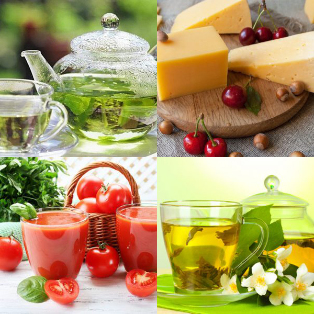
Detailed menu of Japanese green tea diet
Day 1 / Day 14
Breakfast:
- green tea
- - glass; Fat-free cottage cheese
- - 150 g.
Lunch:
- Cabbage
- , stewed with butter - 300 g; Boiled chicken eggs
- - 2 pcs. ; fresh apple
- - glass.
Dinner:
- vegetables
- in salad or steamed; Cooked or steamed fish
- - 200 g.
Day 2 / Day 13
Breakfast:
- green tea
- - glass; hard cheese
- - 2 pieces; toasted or diet biscuits
- .
Lunch:
- Boiled or raw cabbage
- , seasoned with oil; boiled fish
- ; green tea
- - glass.
Dinner:
- Vegetable salad
- ; cooked veal
- - 300 g; Boiled chicken egg
- - 2 pcs;
- Japanese green tea - glass.
Day 3 / Day 12
Breakfast:
- Japanese green tea - glass; Diet cookies
- .
Lunch:
- cooked zucchini / cauliflower; apple
- - 1 pc. ; green tea
- - glass.
Dinner:
- Yellow-green vegetable salad
- ; cooked veal
- ; Boiled chicken eggs
- - 2 pcs.
Day 4 / Day 11
Breakfast:
- Japanese green tea - glass; Fat-free cottage cheese
- - 150 g.
Lunch:
- raw grated carrots with olive oil; chicken egg
- ; green tea
- without sugar.
Dinner:
- green tea
- ; Fruits
- (not grapes and bananas).
Day 5 / Day 10
Breakfast:
- green tea
- - glass; Croutons
- with jam - 2 pcs.
Lunch:
Cooked fishDinner:
- Green vegetable salad
- ; hard cheese
- - 2 pieces; green tea
- - glass.
Day 6 / Day 9
Breakfast:
- Rye flour croutons
- - 2 pcs. ;
- Japanese green tea - glass.
Lunch:
- raw cabbage
- / cooked with olive oil; boiled chicken
- without skin - 400 g;
- Japanese tea - glass.
Dinner:
- carrots
- (cooked / raw); boiled eggs
- - 2 pcs. ; Unsweetened green tea
- .
Day 7 / Day 8
Breakfast:
- Japanese tea - glass; Cheese
- (any of the hard types) - 2 small pieces.
Lunch:
Cooked vealDinner:
- Results
- - none;
- Japanese green tea - glass.
The effectiveness of this change in the Japanese diet is enhanced by the addition of green tea to the diet, and due to the variety and taste of the menu it is easy to shift the period of food restrictions. Repeat the diet - no sooner than a year later. And so achieved in a fortnight the results lasted longer, in the future it is recommended to adhere to a healthy lifestyle, eliminate smoking and limit the portions of alcohol, and observe proper nutrition in daily life.
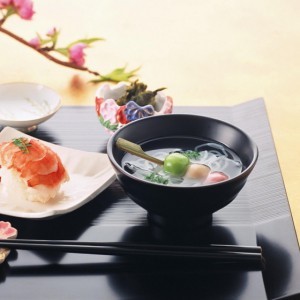
Main dishes
Whichever Japanese diet you choose, any will have a traditional cabbage salad and cooked meat. These dishes can be prepared in different ways. But remember that they are part of the diet and the cooking process is a little different from cooking. ordinary meals.Making the Right Japanese Salad:
- Take raw or slightly cooked cabbage (common cabbage or Peking cabbage).
- Cut finely.
- Easily squeezed out too much moisture.
- Season the salad base prepared with olive or sesame oil.
- Stir and let it brew.
Boiled meat on a diet
- Preparing meat. If it is chicken, remove the skin. Remove veal or beef skin from the film.
- Rinse well with cold water.
- Place the meat in a saucepan, cover with very cold water.
- After boiling, drain the water, rinse the meat and, again filling with water, set it on fire.
- Cook until tender without adding spices.
: add onion, a little carrot, and a little greenery to the water to enhance the flavor during cooking. Many people wonder how to replace beef in the Japanese diet. Young veal can be brought into the menu, which is easier to digest, but with the same chemical composition as beef.
How were the products selected?
Almost every source says that the list of foods allowed during the Japanese diet is special and should not be changed. So what is the secret of this particular diet?
 Coffee
Coffee. Many people start their day with this aromatic drink. A cup of ground black coffee serves as a traditional breakfast and in the Japanese diet.
What's the use?
Sugar-free black coffee, which has a stimulating effect, helps the body wake up faster and start the process of burning calories. And since the diet does not provide morning food intake, the body begins to produce energy through its own reserves - subcutaneous fat.
You can diversify the taste of your morning drink by adding vanilla, dark chocolate or citrus fruits. Add extra ingredients in small doses.
Cabbage. This vegetable was not chosen for the diet by chance. In addition, cabbage is one of the vegetables with the so-called “minus” calorie content (the body spends more energy on its digestion than it receives).
What's the use?
Cabbage, white cabbage or Peking, has a strengthening effect on the walls of blood vessels, lowers cholesterol levels, and cleanses the intestines. For people who are prone to congenital, it is best to boil cabbage a little before using it.Olive oil. A teaspoon of oil added to the salad normalizes metabolism, has a beneficial effect on the liver, kidneys and pancreas.
Eggs. This product has good nutritional properties, is a great source of proteins, fats and carbohydrates, as well as many vitamins and trace elements.
Tomato juice. Nutritionists call it one of the healthiest. The unique chemical composition of tomatoes prevents cardiovascular and oncological diseases, accelerates metabolic processes in the body, improves mood and has a beneficial effect on the nervous system. It is best absorbed without the addition of added salt, which is especially important in a salt-free diet.
Fish. It is known for its ability to remove toxins and toxins quickly. It is a valuable source of proteins and amino acids. It affects the body as a preventive measure against strokes.
Results. Normally, during dieting, the amount of carbohydrates consumed should be significantly reduced. But it is completely undesirable to exclude from the diet - they are an important source of energy. The body gets “right” carbohydrates along with fruit. But from the diet best to exclude bananas and grapes, which are high in sugar.
Naz Moriyama Diet
It's hard not to believe in the effectiveness of the Japanese diet, especially for those who have nevertheless decided to try it for themselves. But sooner or later, many people ask themselves: why is this diet called the “Japanese diet” if there is nothing practical on the menu? from traditional dishes to Land of the Rising Sun. But there is an explanation for this. According to one version, this original diet is the development of Japanese clinic nutritionists "Yaelo".
But there is another version of "Japanese", created by marketer Naomi Moriyama - in response to Frenchwoman Mireille Guiliano, author of the book "Why French Women Don't Get Fat. "the French in the narrowest way in the world. The least obese people live in Japan - only 3 percent, while France has about 11% donuts, and in the US - more than 32%. So Naomi collected the nutritional principles that are typical of her family and adapted them into a diet.
Food rules from Land of the Rising Sun
Eastern residents eat nearly 100 different types of food per week, whose total calorie content is more than a quarter lower than, for example, the weekly calorie dose in Americans. And the only secret of Japanese composure lies with a simple rule: fill the stomach 80 percent.














































































